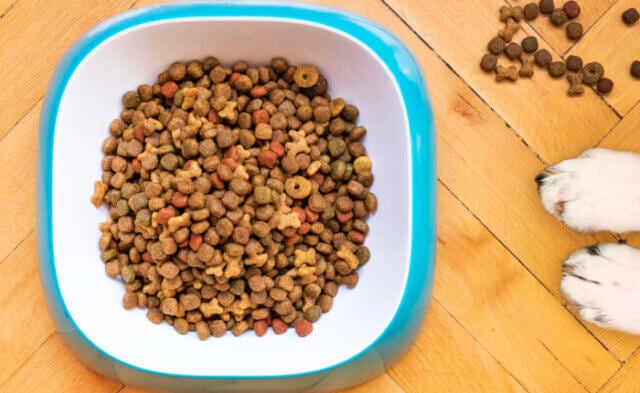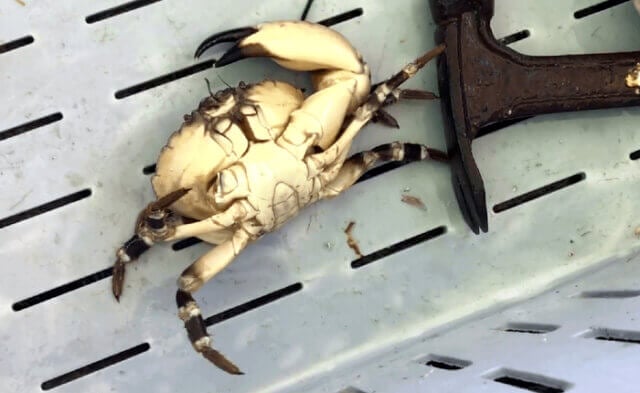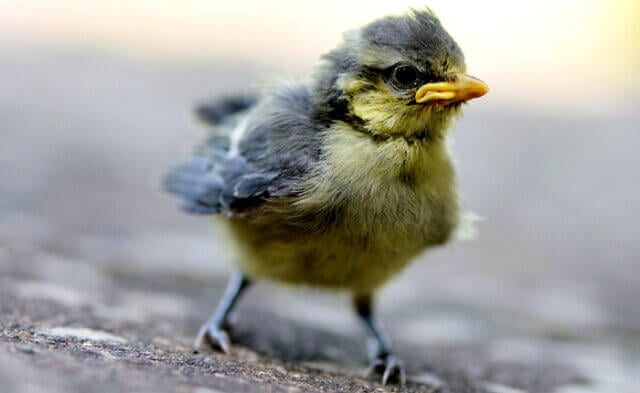Everyone knows wool comes from sheep, but considering society’s readiness to shun fur, it seems that not everyone has made the connection that wearing wool is just as cruel. Here are seven facts that will make you swear off wool:
1. Sheep in the wool industry are mutilated in two common ways.
Merino sheep are selectively bred to have wrinkled skin so that they’ll grow as much wool as possible. However, the folds in their skin collect urine and moisture, making them an attractive place for flies to lay their eggs. The hatched maggots sometimes eat sheep alive. Farmers claim that removing sheep’s tails and other skin helps prevent “flystrike” and the buildup of feces.
Sheep are born with long tails, just like dogs, before farmers cut them off. “Tail-docking” is done by burning or cutting off the tail or putting a thick rubber band around it to prevent blood flow until it falls off. These bands are also used to castrate lambs.
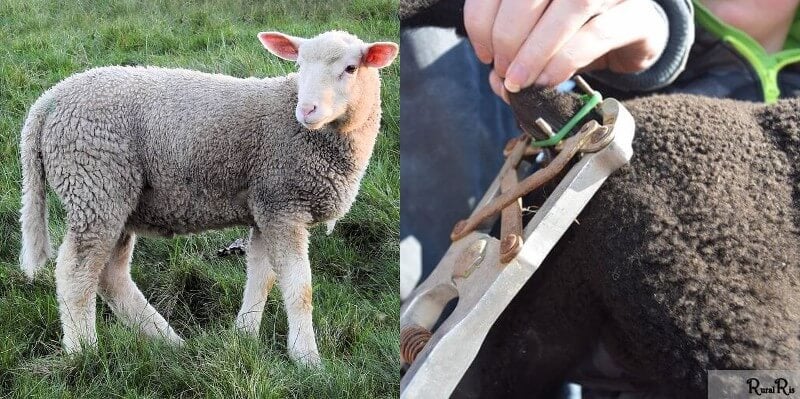
“Mulesing” involves lopping off huge swaths of flesh from lambs’ rumps. The smooth, scarred skin is thought to be inhospitable for fly eggs, yet ironically, the bloody wounds created by mulesing often attract flies before they heal.
All of these procedures are performed without pain relief.
2. Sheep don’t need to be shorn.
Without human interference, sheep grow just the right amount of wool to protect themselves from temperature extremes. The reason that feces become matted in a sheep’s wool is because these animals have been selectively bred to produce unnaturally fine and excessive amounts of wool. In other words, if humans didn’t exploit sheep for their wool, they wouldn’t be exposed to severe flystrike and feces buildup, and they wouldn’t need to be shorn.
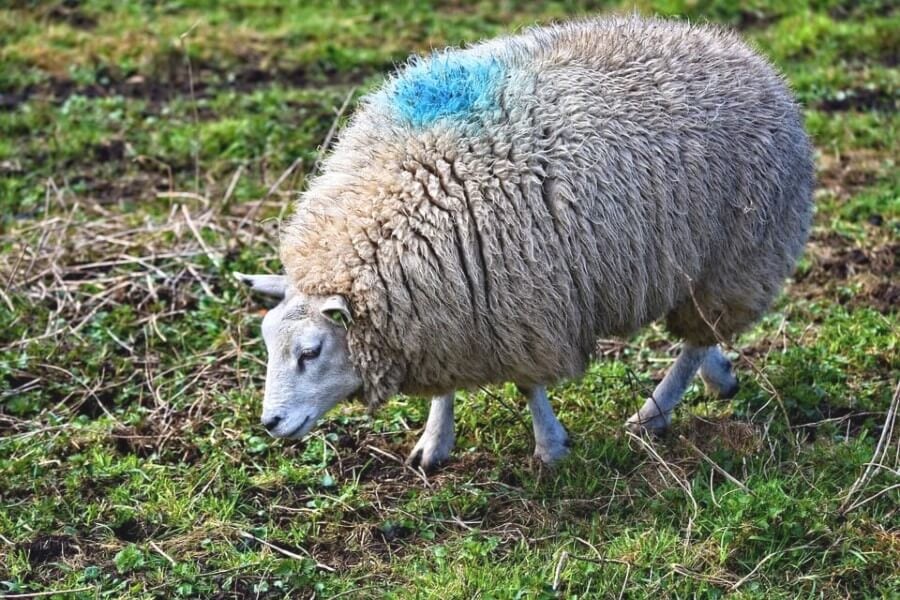
3. Sheep are bred in excess to offset rampant death.
In an attempt to counter the vast number of deaths in the wool industry, farmers have selectively bred sheep to increase the number of multiple births, resulting in twins, triplets, or sometimes even five or six lambs at a time. Ewes carrying multiple babies can develop pregnancy toxemia, also known as “lambing sickness” or “twin lamb disease.” The wool industry in Australia estimates that a quarter of lambs die from exposure, malnutrition, or disease or are killed by predators within days of birth.
4. Shearers are paid by volume, not by the hour.
Workers are paid to get the job done as quickly as possible, which encourages sloppy work and disregard for the sheep. Some shearers clip more than 350 sheep in one day. PETA entities have investigated 117 wool industry operations in Australia, Europe, North America, and South America, and abuse was rampant at each one. Desensitized workers hit, kicked, and stomped on sheep’s heads; beat them with clippers or hammers; stood on their necks; dragged them; and punched them in the face. It’s common for workers to crudely stitch up sheep’s gaping wounds with needle and thread and without pain relief.
PETA exposés prove that industry schemes such as the “Responsible Wool Standard” don’t reduce or prevent suffering—they just allow a money-hungry industry to fool conflicted shoppers.
5. Raising animals for wool is detrimental to the environment, just like raising animals for food is.
Wool marketed as “natural,” “eco-friendly,” or “sustainable” is a scam. Wool itself is naturally occurring and biodegradable, but sheep are second only to cows in the global production of methane, a potent greenhouse gas. Enormous flocks of sheep bred by the wool industry produce mind-boggling amounts of manure—polluting the water, land, and air. Forested areas are cleared for sheep whose grazing then leads to heavily eroded areas. And millions of other animals are killed every year by farmers trying to protect their flocks from wildlife.
Wool production is significantly more damaging than that of polyester, polypropylene, acrylic, viscose, modal, nylon, elastane, or vegan leather.
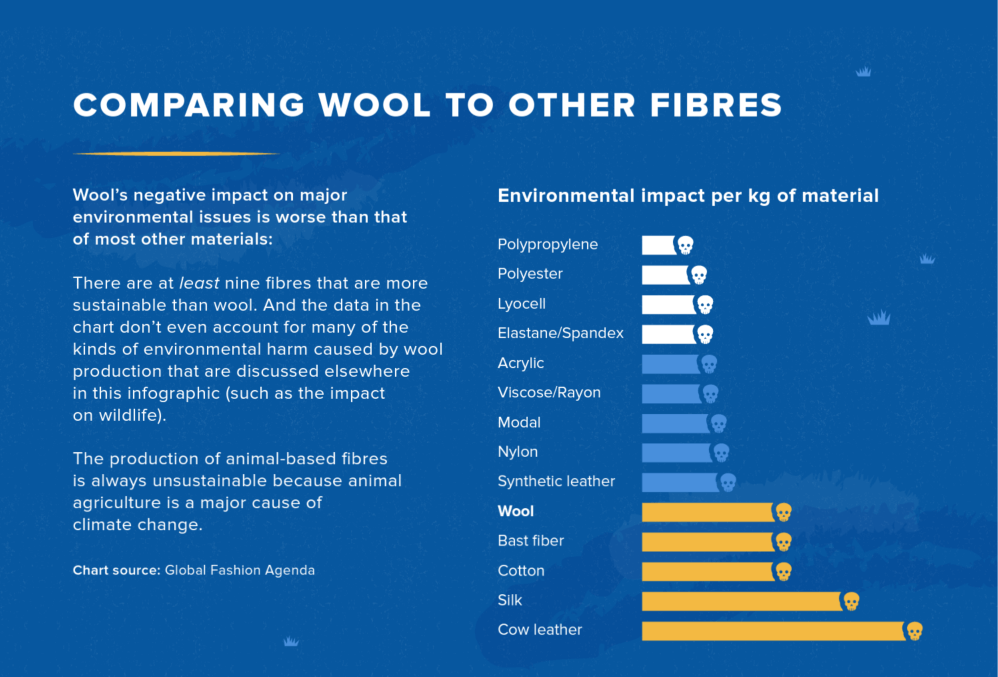
6. Sheep are exported and slaughtered for wool.
As sheep age, their wool becomes more brittle and their “production” slows. If a sheep doesn’t die from abuse, hypothermia, heatstroke, or disease, workers often kill the “unviable” ones in gruesome ways right on site or send them to a slaughterhouse.
Argentina, Australia, and other countries that export wool ship millions of sheep to the Middle East or North Africa for slaughter. Sheep are crowded and stacked on top of one another on multitiered ships and sent on weeks-long voyages across the ocean in all weather extremes. They endure cramped, filthy conditions, and many succumb to disease, injury, or starvation. Upon arrival, the survivors are kicked or dragged from the ships and their throats are slashed. Some sheep are hacked apart while they’re still conscious and moving.
7. Wool is an itchy material and a dying business.
According to a BBC article, wool’s popularity has been declining since the 1950s and some farmers are throwing huge amounts of fleece into compost heaps. Let’s put the final nails in the coffin—pledge never to buy wool! Hundreds of brands are using our “PETA-Approved Vegan” logo, which can help ensure that you won’t contribute to this abusive industry.
Shop PETA’s Favorite Wool-Free Clothing

